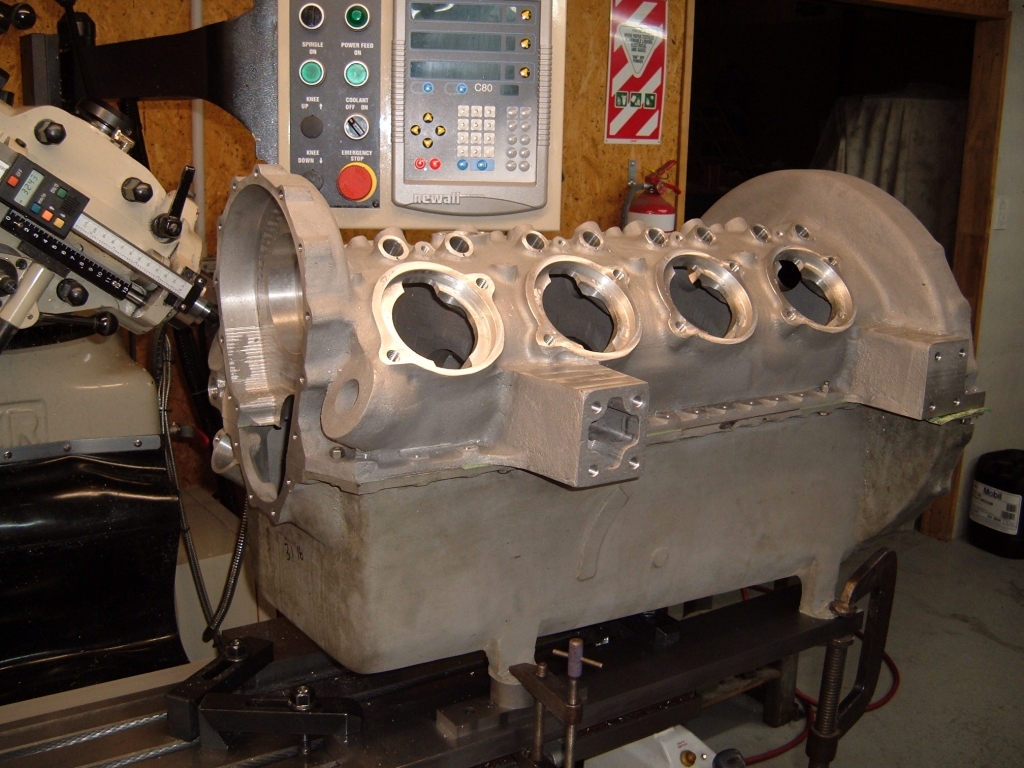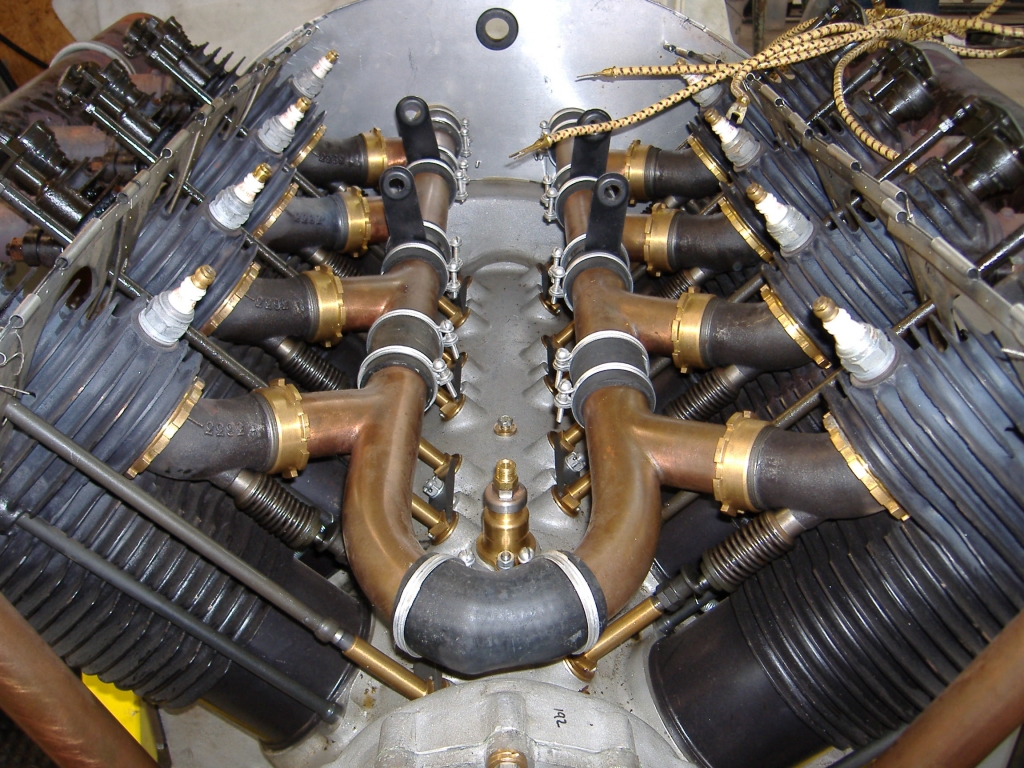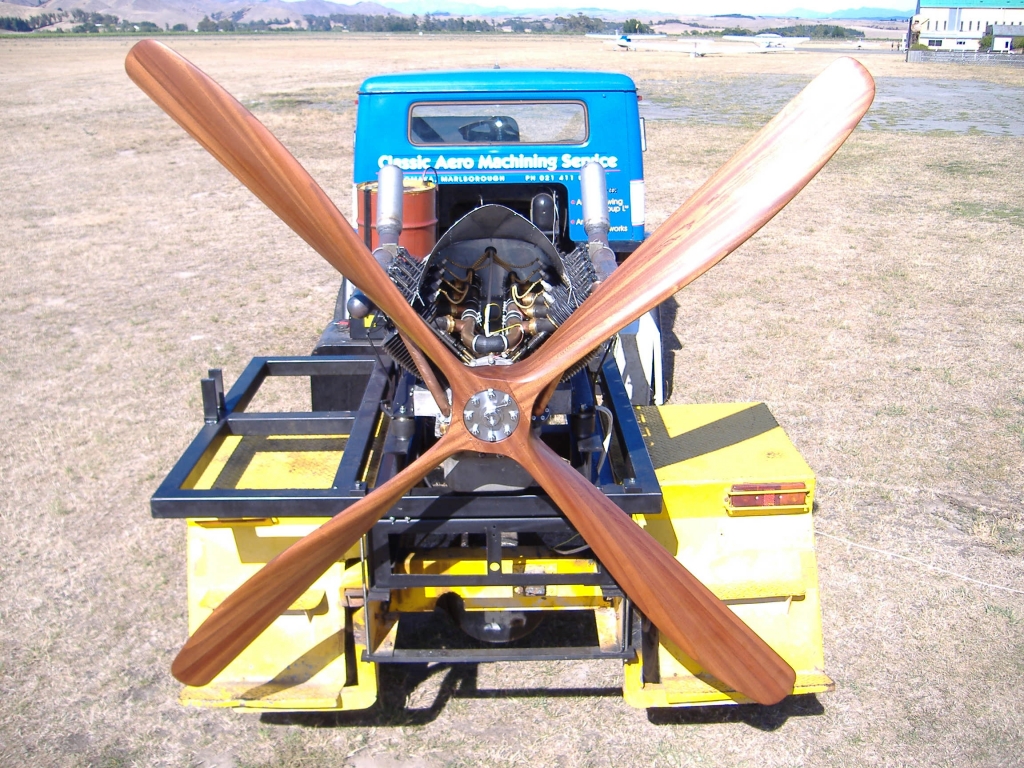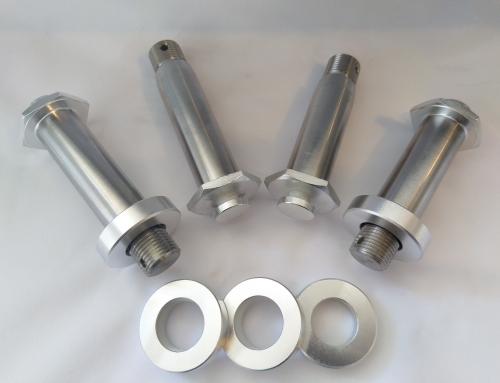The Royal Aircraft Factory Farnborough developed the RAF 1A based on the 70 HP Renault Aero engine. Approximately 2800 RAF 1A’s were manufactured by 6 different manufacturers. No operational RAF 1A engines remain. The engine is rated at 90 HP at 1600 RPM and short bursts of 100 HP at 1800 RPM (getaway mode).
Original engine in poor state.
Classic Aero Machining Service (CAMS) took over the reverse engineering and remanufacture of the RAF engine in May 2004. As Photo 1 shows, the original engine was in very poor condition and the reverse engineering was like assembling a 3D jigsaw, only not all the parts were present and many were seriously damaged. It was important that the engine was kept as close as possible to the original and any deviations that had to be made were carefully considered.
Reverse engineering
The changes in technology from 1915 to present day are enormous, including materials, oils and fuel as well as manufacturing methods. As the engine was dissembled each part was drawn into CAMS’ 3D CAD programme and assembled in the programme until the virtual engine was complete.
RAF 1A engine – Remanufacture
The engine block, sump, front cover and flywheel cover were all cast in CC601ee Aluminium Alloy and heat-treated to T6. The original parts were built up as necessary and used as patterns for the castings.
A substantial amount of machining was required both internally and externally. Internally machined to remove excess material and weight.
Machining details to the top of the block.
Once all the preparatory work had been completed the finish machining could begin.
The block ready for line boring
Crankshaft
The original crankshaft was made of forged steel and was hollow with plugs fitted to retain the oil. The main bearings are roller and ball. The photo shows the finished crankshaft resting on the type of steel billets from which it was machined.
The crankshaft was made from 4340 billet. It was stress-relieved then nitrided to give it a hard bearing surface. Fortunately a drawing for the crankshaft from a different model, the only difference being at the flywheel end, was available and utilised along with the original crankshaft to manufacture the new crankshaft.
Conrods
The original conrods were made from steel and machined to an H section. The photo shows the original example and the finished new conrod.
Bearings and Caps
The original caps were cast steel, the new ones were made from 1045 steel and fitted as per the original with the required amount of crush on each bearing.
The replacement bearings were all produced from standard metric bearings (The original metric measurements of the Renault engine were retained by RAF) and required a step to be machined on the outer diameter of the bearing to match the steel caps.
Cylinders
The inlet and exhaust valves have both benefited from the advances made in valve material. The inlet valves are off-the-shelf and are made from stainless steel. They were trimmed to length and have had a slot machined in them to retain the spring. The exhaust valves were machined from a truck exhaust valve.
Cam and output shaft
The Camshaft and output shaft were made from original parts. The camshaft is hollow and is mounted onto the output shaft with splines and then tapered pinned in the exact position. The output shaft has the main drive/timing gear fitted onto it.
The completed new output shaft and timing gear.
Carburettor
The carburettor was made from a collection of parts. The carburettor rebuild was a collaborative project with an associate company. The carburettor had to be re-engineered from very degraded parts as the before and after photo shows.
The carburettor worked first time and only required a small adjustment on the main jets.
Engine complete ready for testing.
Engine testing
With the changes made to the engine and very little known of its performance history ground-run testing was essential before fitting to the airframe. A test bed was developed and built with a pivoting cradle, load cell and computerised data-logging of engine output and critical temperatures.
A set of out-of-service blades and a suitable hub were sourced and clamps made to hold the blades. This provided appropriate loading for preliminary testing.
CAMS would like to acknowledge the support of the following during this project:
Stuart Tantrum
Wayne Trantum
Alistar Ansel
Dave Adams
Neil Buunk
Aeromotive
Suppliers and sub-contractors
Test run
The engine was finished, assembled and fired for the first time on 30th September 2005. The engine was able to be run for extended periods and the temperatures kept stable. With over 10 hours of running the engine achieved 100 hp at 1800 rpm and 90 hp at 1600 rpm which is the output of the original engine.
Wooden prop fitted
With the output of the engine established, the new four blade wooden prop was fitted.
The need to reproduce an engine to power an original airframe, taking into account today’s safety standards, was paramount to the rebuild process from the outset. The careful choice of modern materials and parts has allowed them to be successfully grafted into this antique engine to produce a safe and reliable power plant.













